Cruise industry aims to be cleaner and greener
Sustainability is the hot topic as cruise lines return to the world’s oceans and rivers – and some of our most fragile environments.
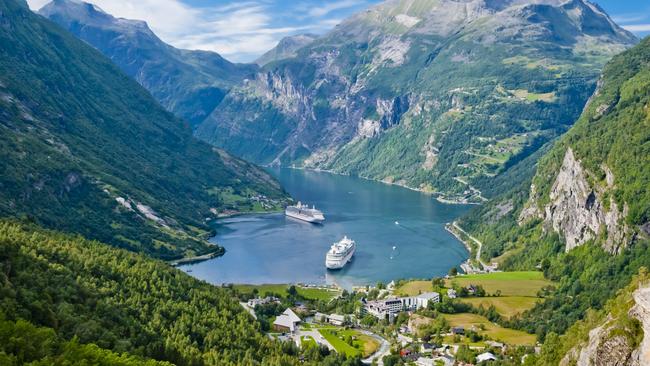
Cruising and sustainability are unlikely bedfellows. Defending the cruise industry against accusations of air pollution, the illegal dumping of waste and its contribution to overtourism isn’t easy. Yet nor is it justifiable to tar all cruise lines and all ships with the same brush as carbon-belching, sewage-dumping liabilities.
The environmental charity Friends of the Earth might not agree; its 2021 Report Card for the cruise industry damningly gives 10 of the 18 cruise lines rated a grade F. No one gets close to an A in the annual survey, which looks at air and sea pollution, sewage disposal and transparent reporting.
Yet, according to industry body Cruise Lines International Association, operators have invested $US23.5bn ($43bn) in ships with new technology. Everything from more efficient hull design to hybrid power, experimental new fuels, more sustainable provisioning and more accountable supply chains are contributing to a cleaner future for cruising. CLIA’s ocean-going members this week committed to pursuing net carbon-neutral cruising by 2050.
Britain’s transport secretary, Grant Shapps, recently backed an absolute zero target for international shipping emissions by 2050, including ferries and cruise ships, which would far exceed the International Maritime Organisation’s goal of a 50 per cent reduction in greenhouse gases by the same year. Separately, Carnival Corporation, the world’s biggest cruise company, announced last month it was “aspiring” to achieve net carbon-neutral ship operations and zero-emission ships by 2050. The company says it will reduce carbon emissions by 40 per cent by 2030.
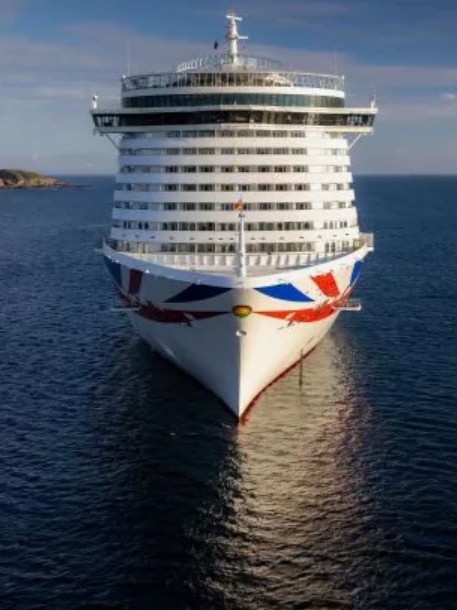
Small operators are also playing their part. Variety Cruises, a family-owned company in Greece, is the first cruise line to sign up to Tourism Declares, a community of 318 travel and tourism organisations committed to halving global emissions by 2030. Variety has promised to cut its emissions by 55 per cent by 2030, a bold move given it operates a fleet of older ships. “We hope our commitment will shed light for other operators within the travel industry and beyond to follow,” chief executive Filippos Venetopoulos says.
Some cruise lines are using less-polluting fuel in their newest ships. AIDA Cruises, Costa Cruises, Carnival Cruise Line and, most recently, P&O Cruises – all owned by the giant Carnival Corporation – have ships powered by liquefied natural gas. It’s still a fossil fuel, granted, but LNG produces zero sulphur or nitrogen emissions and helps to significantly reduce carbon. MSC Cruises and Disney Cruise Line will also launch LNG-fuelled ships in 2022. The limitation for cruise lines using LNG is the fact there are few ports in which they can refuel. P&O Cruises’ new 5200-passenger Iona, for example, will sail only to Norway and the Canary Islands initially. Making shipping of any kind more sustainable depends on port infrastructure as well as the lines themselves.
One area in which cruise lines are making progress is in shore power, or “cold ironing”, to use industry jargon. If ships are equipped to connect to the mains grid in port, they don’t need to run their engines while docked, thereby reducing emissions. As yet only a few ports around the world have installed this technology, among them San Diego in California, Juneau in Alaska, Bergen in Norway, Tallinn in Estonia and the Chinese city of Shanghai. Plenty more are developing shore power connections, including some of the big European hubs, such as Valletta in Malta, Southampton in Britain and Barcelona in Spain. Cruise lines, meanwhile, are retrofitting their ships so they can tap into shore power.
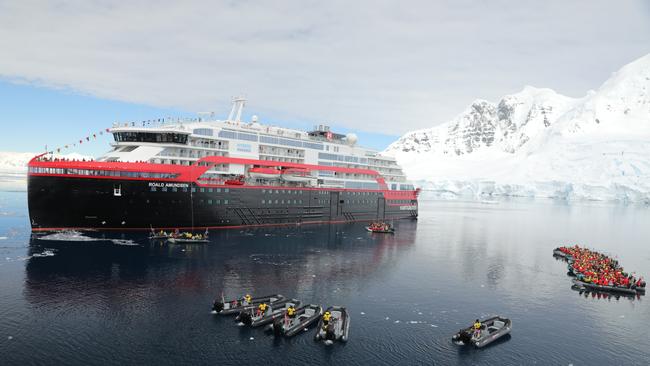
Several cruise lines are experimenting with hybrid power. Hurtigruten Expeditions paved the way with its hybrid-powered expedition ships, Roald Amundsen and Fridtjof Nansen, the first of which launched in 2019. The company is converting the rest of its expedition fleet to hybrid with the aim of reducing emissions by 20 per cent. Meanwhile, the seven ships in Hurtigruten’s Coastal Express fleet, which operates a scheduled service up and down the Norwegian coast, are being converted either to hybrid power or, even more excitingly, to run on biofuel, made in part from dead fish.
Hurtigruten’s rival Havila Voyages, which shares the rights to operate Norway’s coastal route, has launched two hybrid-powered ships with even bigger batteries, and has future-proofed both for when hydrogen power, the holy grail, becomes an option. Havila Castor and Havila Capella can glide into pristine fjords on battery power alone, with no noise or emissions. Others will soon have to follow suit; the Norwegian government has announced that Geirangerfjord and Naeroy-fjord will be zero-emission locations from 2026 at the latest, so even LNG-powered vessels won’t be able to sail in those waters. Cruise lines that don’t make the grade will need to establish hubs outside the fjords and take passengers in on day trips using electric ferries that are being developed.
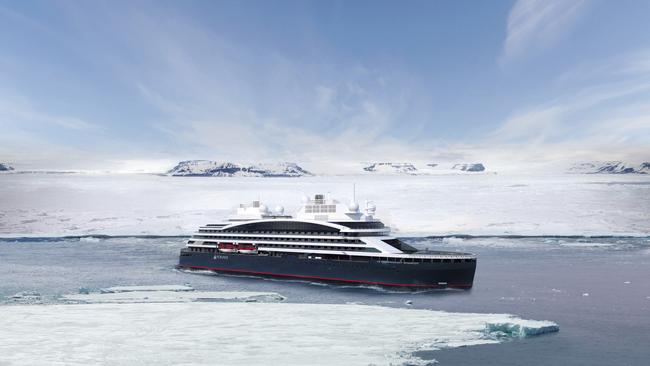
Sustainability is more important than ever in fragile environments such as Antarctica and the Arctic. Ponant’s newest expedition ship, the ice-toughened, 270-passenger Le Commandant Charcot, is one of the greenest at sea, running on LNG and hybrid power. Ponant offsets 150 per cent of its carbon emissions and is the first cruise line to achieve Green Marine certification, awarded to companies that commit to measuring and reducing their environmental impact. Lines that have not gone down the LNG route say they are future-proofing their ships for even greener fuels and offsetting in the meantime. Virgin Cruises made its direct emissions carbon neutral from its launch last year, buying carbon offsets in wind and solar projects. Its first ship, Scarlet Lady, is also one of the first to use a system created by Climeon, a Swedish energy-conversion specialist, that uses otherwise wasted heat from engine-cooling water to generate electricity. Six Climeon units on board power the equivalent of 750 average American households, according to Virgin.
River cruise lines are also slowly embracing sustainability. A-ROSA will launch a new 280-passenger ship, A-ROSA Sena, next year, with hybrid propulsion allowing it to sail silently into port, hook up to shore power and recharge overnight. A streamlined hull design will reduce drag, further saving fuel.
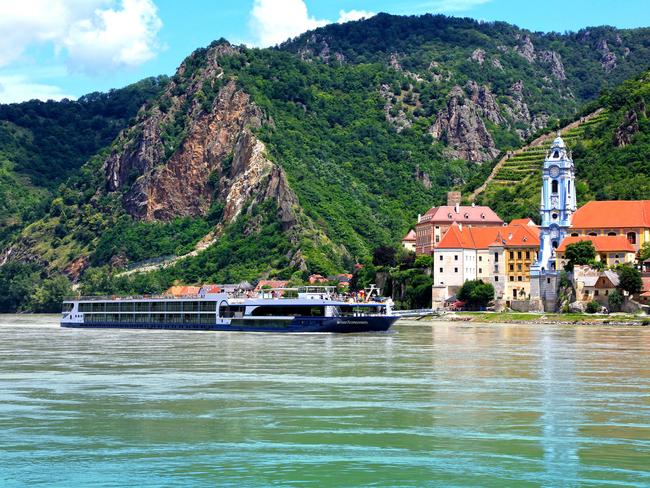
Avalon Waterways plans to pilot a biofuel program and introduce an entirely electric riverboat by 2027. The company has a partnership with The Ocean Cleanup, a non-profit organisation that uses solar-powered vessels to extract plastic from rivers before it reaches the ocean.
Cruise ships of the future will look different as a result of the quest to become more fuel-efficient. Some lines have embraced a revolutionary new hull design to reduce fuel consumption. Aurora Expeditions, recently certified carbon neutral by South Pole Climate Neutral Company, and Lindblad Expeditions are two of the first cruise lines to build ships with the wave-piercing Ulstein X-BOW, a Norwegian invention involving an inverted bow that slices quietly through the waves with little vibration, cutting fuel consumption by up to 60 per cent.
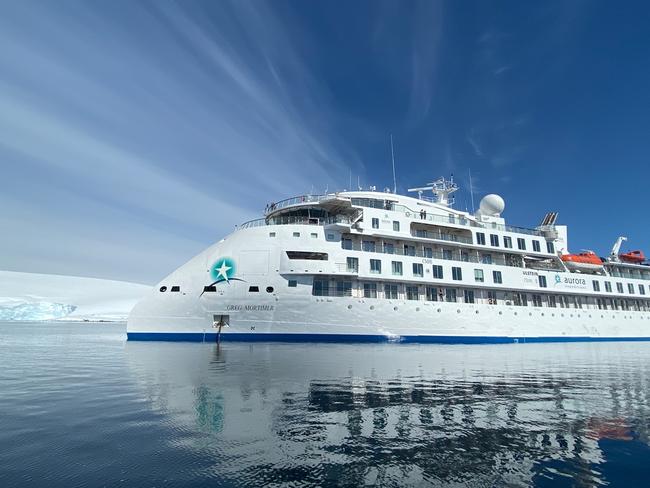
Change is afoot on board too. Cruise lines can make a big difference in their environmental impact by provisioning their ships from sustainable sources. In Norway, Hurtigruten sources pretty much everything locally, from king crab to cod and cloudberries. In the Galapagos Islands, Celebrity Cruises supplies its ships from local organic farms and has established a co-op so Galapagos fishermen have a clean processing plant in which to prepare, store and sell their catch.
Luxury line Crystal Cruises has also revamped its supply chain to buy from companies that demonstrate sustainability and minimise packaging. In addition, the company offers volunteering excursions in port, which range from beach clean-ups to spending a day working at a food bank, animal shelter or children’s home.
Some small steps, some bigger, perhaps, but the collective desire and commitment among cruise lines for a sustainable future is undeniable.
THE TIMES

To join the conversation, please log in. Don't have an account? Register
Join the conversation, you are commenting as Logout